Why Australia has embraced Greg Norman’s LIV Golf league while the rest of the world doesn’t care
LIV Golf still struggles for relevance in the US. So why has it been such a hit in Australia when it has been such a slow burn in other parts of the world? ADAM PENGILLY investigates.
Golf
Don't miss out on the headlines from Golf. Followed categories will be added to My News.
One of the world’s best DJs, flown in for an eye-watering sum to play a set before jetting straight back out, is striding down the middle of a golf hole daring Cameron Smith to do a shoey.
Smith loves a good a time as much as the next bloke, but this was inside the ropes and in the middle of battle, during a tournament in which Smith has never played for more money. He laughed it off, gave DJ Fisher a high five and kept walking up to his ball on the “watering hole”, no doubt wondering: “Did that really just happen?”
Needless to say, The Fish, well, drunk out of the shoe like a fish.
Welcome to LIV Golf in Australia.
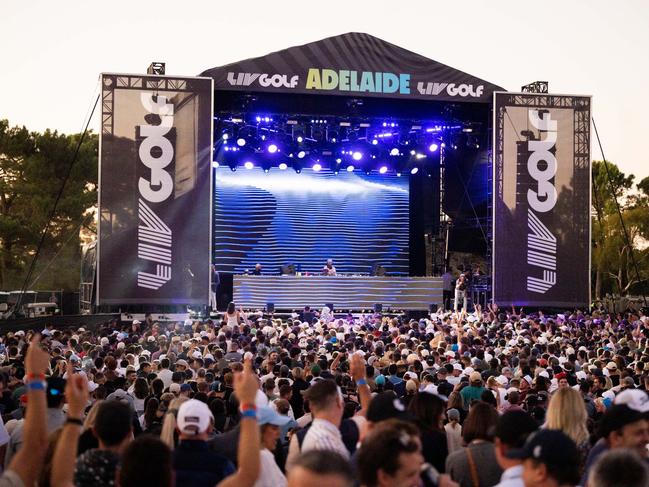
This week, DJ Fisher and Smith will be back at the Grange Golf Club for the third edition of LIV Golf Adelaide. It’s predicted more than 100,000 people will surge through the gates over three days.
The Australian leg of the rebel tour – in which Greg Norman spent billions of Saudi Arabia’s bottomless wealth, known as its public investment fund, to recruit some of the world’s best golfers such as Smith, Jon Rahm, Brooks Koepka and Phil Mickelson – is already LIV Golf’s flagship event. It’s an eclectic mix of birdies, beers and the odd boorish behaviour (its first staging in 2023 was voted the world’s best golf event for the year).
While the upstart league still struggles for relevance in the United States, albeit it has just signed its most significant television deal with America’s Fox Sports for 2025, tournament organisers have no other way to fit more people into its Australian event other than to go up.
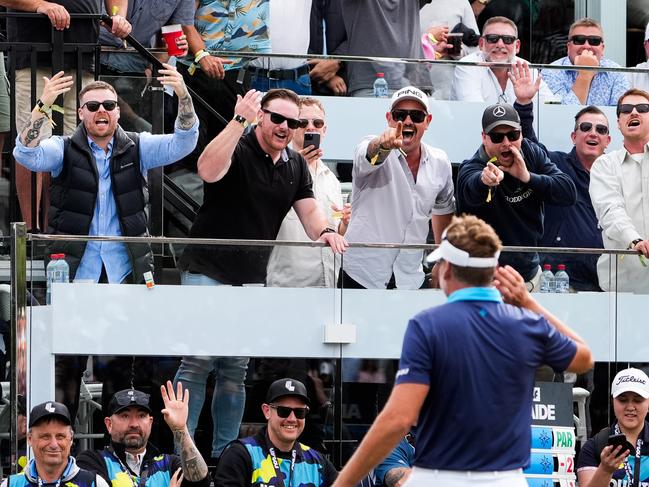
They have built more elevated corporate areas and public grandstands to cater for demand.
So, why has LIV Golf been such a hit in Australia when it has been such a slow burn in other parts of the world?
“I thought it would be a success, but I didn’t foresee it would be as big a success as it has been,” South Australian premier Peter Malinauskas tells The Weekend Australian.
“There was a risk (hosting the event), but it was a calculated one. It wasn’t a reckless risk.
“We identified and saw that Australian golfing fans really hadn’t been catered for by world golf and the USPGA (Tour). There was a real interest in an opportunity to see some of the world’s best golfers on Australian shores, including Australia’s own.”
Malinauskas’ ambition to put South Australia back on the map can be traced to a late Saturday night phone call with LIV Golf’s ultimate disrupter, Norman. Malinauskas used tennis legend Roger Rasheed, a friend of Norman, to facilitate a conversation between the two.
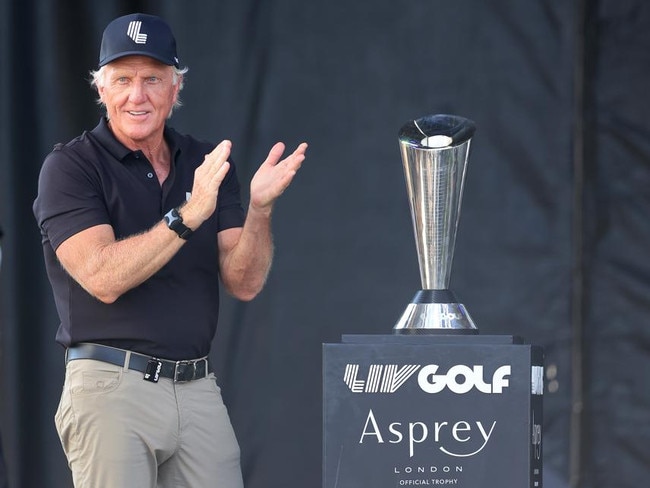
In front of an exclusive corporate function during last year’s event, Norman baited Malinauskas about coming from the wrong side of the political ledger. But there’s one thing more important to Norman than politics – money. And he’s always wanted someone to love his lifelong ambition of a truly global golfing tour.
Malinauskas opened a door for Norman when others were closing – fast. Some of the most prestigious courses in the world wouldn’t even entertain hosting a LIV tournament at the height of its controversial inception and criticism over Saudi Arabia’s human rights record.
“We’re serious about this,” Malinauskas told Norman over the phone. “LIV is a breakthrough golf league seeking to do something different and South Australia is seeking to break through on the national stage more broadly for our own economic agenda.”
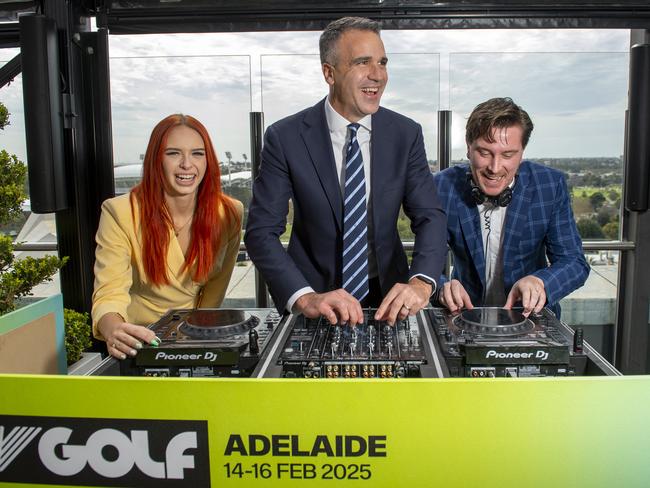
This year, almost half of all people attending the Grange Golf Club will come from interstate, filling hotel rooms, cafes, pubs and public transport fuelling an economic surge for South Australia. Malinauskas has backed the right horse.
Corporate Australia is also on board. Brands such as Accor, Asahi, BYD and Ladbrokes have joined as official partners, and sources familiar with the deals have said the event will earn three times as much in sponsorship revenue this year.
Yet it remains doubtful how close LIV goes to breaking even on the tournament given its extraordinary prize money purses, in which players will compete for close to $40 million in Adelaide.
But has LIV been the jolt Australian golf needs, or merely an annual piss-up and party after the last putt is sunk?
“It’s definitely worked,” says Lucas Herbert, a member of Smith’s all-Australian Ripper GC team.
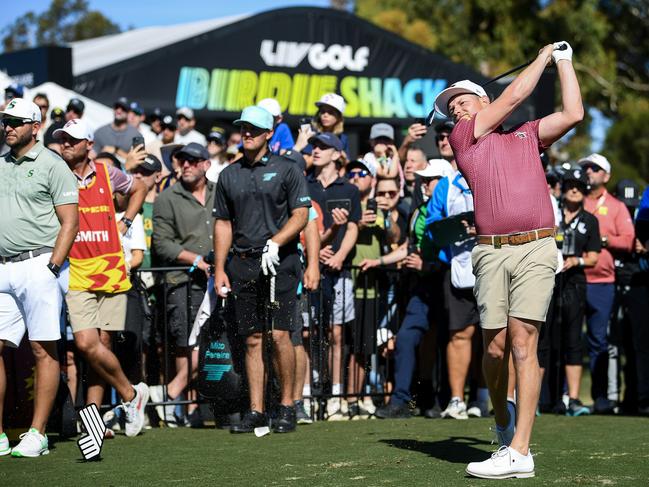
“The Australian public has validated (Norman). In the bigger cities it could maybe get lost with whatever else is going on, but in Adelaide it’s a big focus.
“Pretty much every single player in the league says it’s the event they most look forward to on the schedule. I think it really helps we have Cam on board. He’s probably the most popular Australian golfer in the world right now, and having him play is a big bonus.”
Herbert’s caddie, Nick Pugh, was central to the debate about how far is too far with the party theme after he was pelted in the head with a water bottle as he celebrated Herbert’s birdie on the party hole last year. The next day, bar staff were told to serve bottles of water without a lid on them so they couldn’t be used as projectiles.
LIV Golf wants to soften that image, and this year has inked a partnership with DrinkWise, while catering for more family-friendly activities and areas on course.
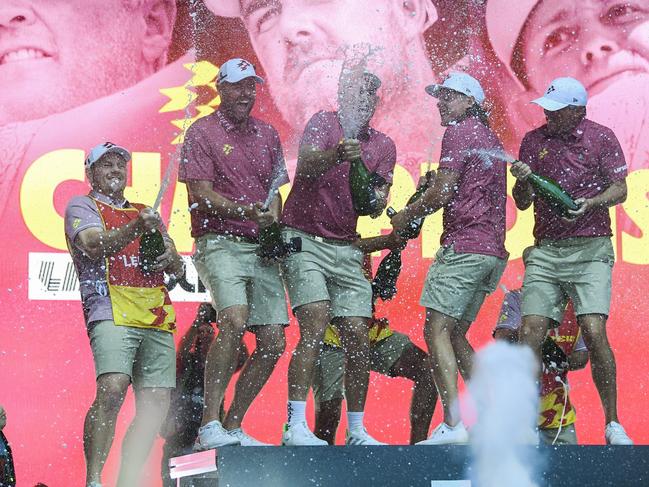
And there will be a different feel off the course, too, with Norman stepping down as LIV Golf commissioner and chief executive. He will remain attached to LIV, but already has other projects on the horizon after being appointed to the organising committee for the 2032 Brisbane Olympic Games. LIV Golf declined to make Norman available for interview.
Norman’s been replaced by longtime US sports executive Scott O’Neil, a former Philadelphia 76ers boss, who is thought to have a more conciliatory approach to relations with the PGA Tour.
“But Greg’s been a big reason the event has been such a success,” LIV Golf Adelaide tournament director Nick Haslam says.
Adds English star Ian Poulter: “I think every tournament looks at Adelaide as the one to emulate. We would love to play 14 Adelaide-type feel events.”
The timing of LIV’s arrival in Australia couldn’t have been better, too. The sport enjoyed a popularity surge during the arduous Covid lockdowns, as young and old took up the game as a means of social distancing while outside.
But LIV’s overall future remains clouded, and its legacy for Australian golf might still yet to be determined.
South Australia’s four-year deal, which at the time seemed an outrageous show of faith with predictions LIV Golf wouldn’t last that long, will end in 2026.
Negotiations between the PIF and the PGA Tour about a new world order for professional golf have already crawled past 18 months since the stunning announcement of a framework agreement to end the sport’s civil war. US President Donald Trump, an avid golf fan whose courses have hosted LIV events, says he would be able to fix the impasse “in 15 minutes”. Still, there’s no sign a deal is close, at least publicly.
Malinauskas is watching with interest, and so too are other states around Australia.
“We remain committed to it and we would love to extend it beyond the current contract,” he says. “Time will tell whether we can land that deal. Hopefully (other states are looking on with) a degree of envy, without so much that they take it off us.”
Until then, DJ Fisher will keep the party going at a golf event envied around the world … shoeys and all.
Originally published as Why Australia has embraced Greg Norman’s LIV Golf league while the rest of the world doesn’t care


